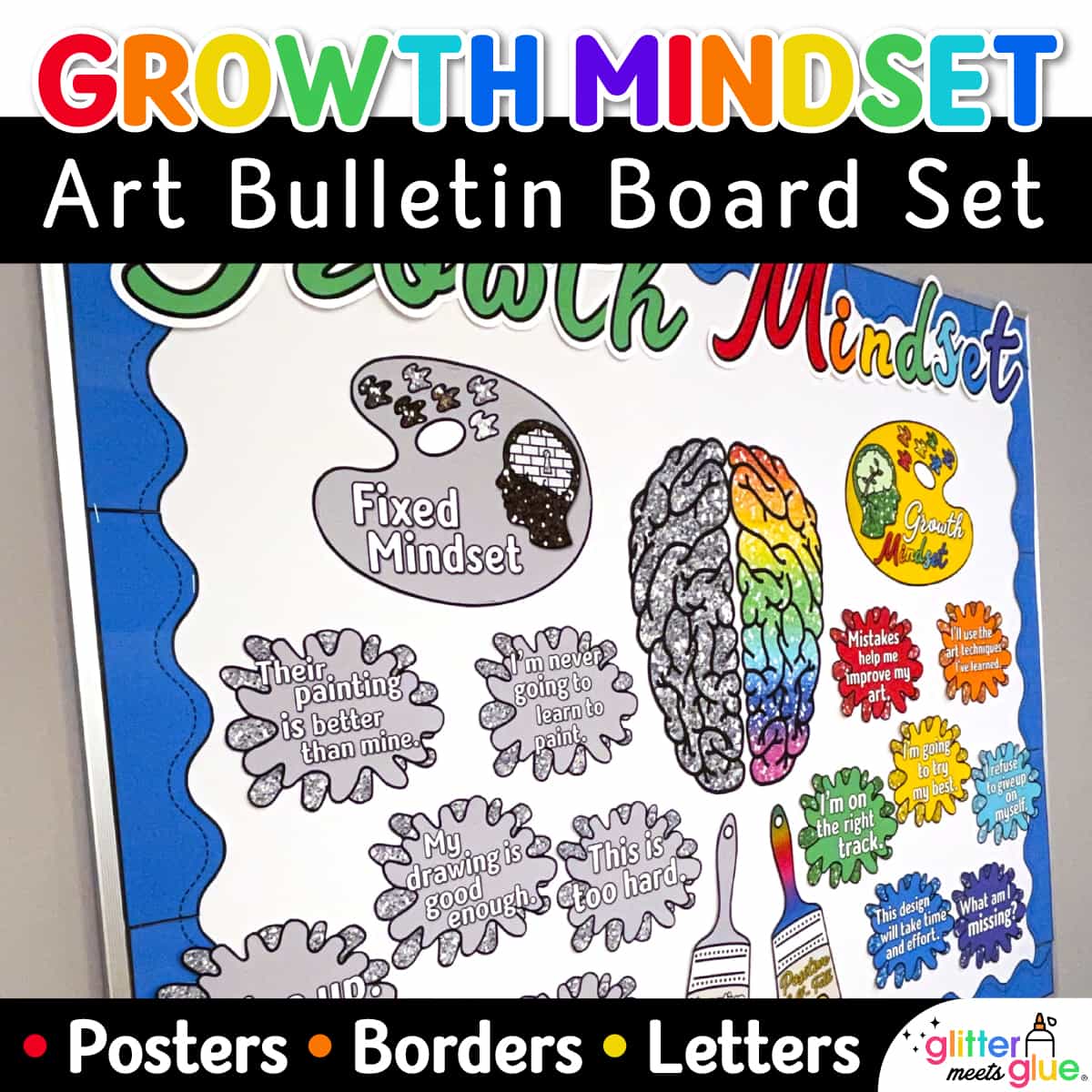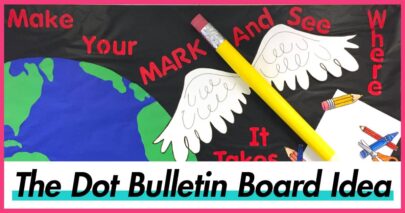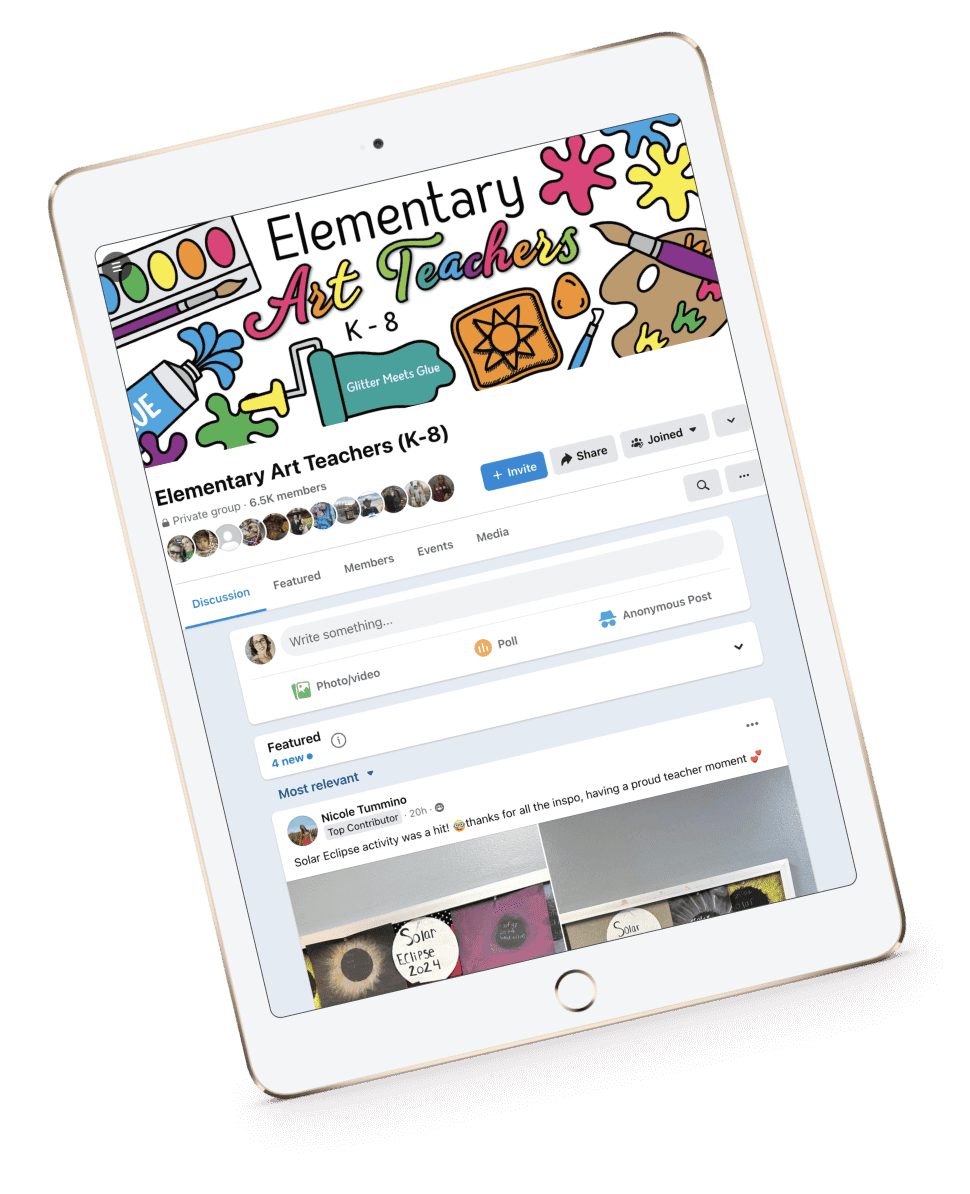Last year I wrote about growth mindset in art education. I talked about how my students were hung up with preconceived notions of either having “talent” or not. And I was wanting some way to help them navigate negative conversations they were having with themselves. It was playing tricks in their mind, causing them to lack motivation to try new things. That’s when I created some growth mindset posters for the classroom.
I used these posters all last year. My goal was to get them to understand that they can grow their brains.
While my students were so focused on outcomes, I wanted them to relate to the process of learning. Leading Stanford psychologist Carol Dwek says it best:
“We found that having children focus on the process that leads to learning (like hard work or trying new strategies) could foster a growth mindset and its benefits.”
To help my students focus on the process, I relied heavily on the phrases, “I’ll use the art techniques I’ve learned” and “What am I missing?”
And as a result, I can honestly say that some of my students improved their thinking. Due to the compelling visuals I had, I was able to remind them daily how to navigate towards a growth mindset.

3 Steps to Using Growth Mindset in the Art Room
I’m not going to lie. It’s a challenge to get students to have a mastery-oriented mindset. How you structure your class from the start is the key to achieving success.
And so is making students accountable for measuring their own goals. When students have ownership of selecting and measuring goals, they have more skin the game.
And it’s a more authentic means of self-assessment.
Here are some simple guidelines to help you get started.
1. Encourage your students to set small goals
They have to be small enough that it doesn’t take a long time to achieve, but robust enough that it’s worth the effort.
Outline the steps required to complete the art project you’re working on. Ask them to mentally note at what point in the directions do they feel they will run into real difficulty. Let them set that as their goal and have them document it.
 2. Focus on the journey, not the destination
2. Focus on the journey, not the destination
Following Carol Dwek’s advice, the process of learning is more important than the perceived end results. As they progress through a task, encourage them to reflect on that goal and the steps they took to solve it.
Ask, “What techniques did you use to solve the problem?” And, “What advice do you have for others trying to get beyond that step?” This will set up your class to be more cooperative in nature, rather than competitive.
3. Praise effort, not intelligence or talent
Praising intelligence turns students off from learning. They are more apt to continue on with tasks that require a similar effort instead of ones outside their comfort zone.
And, you will find this to be true of those high-achieving students more so than the lower ones if you attribute their success at drawing well to talent rather than heralding their effort.
 Growth Mindset Posters for the Classroom
Growth Mindset Posters for the Classroom
I’ve developed these growth mindset posters for the art classroom specifically with art teachers in mind. Each fixed or growth mindset phrase is overlapped onto a splatter of paint. Two signs are included so as to label each of the two types of mindsets.
You also get two brushes which are great for demonstrating how to brush away all that negative self-talk!
Also, there are bordettes of two thicknesses and a matching pennant banner in two sizes to help finish off your bulletin board display.
To allow for flexibility, I’ve included large format posters of the brain which can be printed online or in a copy center, if you so desire. If you don’t want to incur the cost of printing at a large size,
Lastly, I’ve included graphics of the brain on the same page and also each hemisphere on its own page which will print at 8.5″x11.”

I use these classroom growth mindset posters from the start of the school year to reap the benefits of a more productive learning environment!
Have you tried growth mindset in your art room yet? How did it go? I’d love to hear. Drop a comment below.



 2. Focus on the journey, not the destination
2. Focus on the journey, not the destination Growth Mindset Posters for the Classroom
Growth Mindset Posters for the Classroom





I LOVE this! It will help my perfectionist students sooo much and I have lots of them- extremly high achievers that he little finished bc it is not ” what they invisioned” or it diesn’t look right..
So many of us artists are perfectionists! Myself included. So I totally get it. 🙂